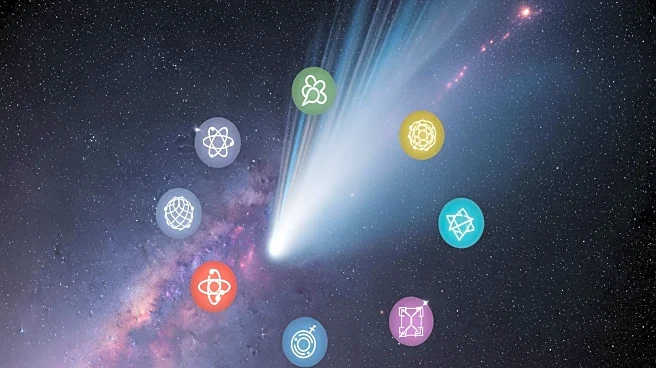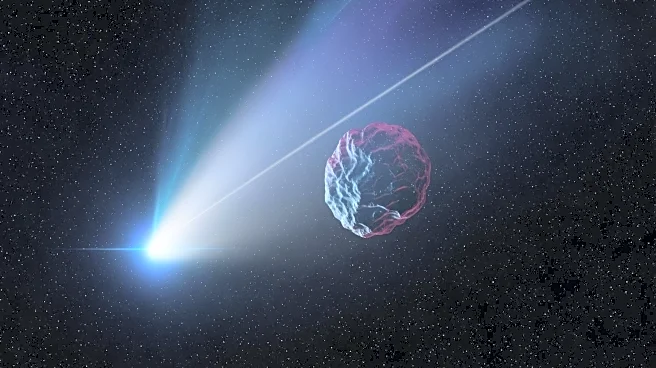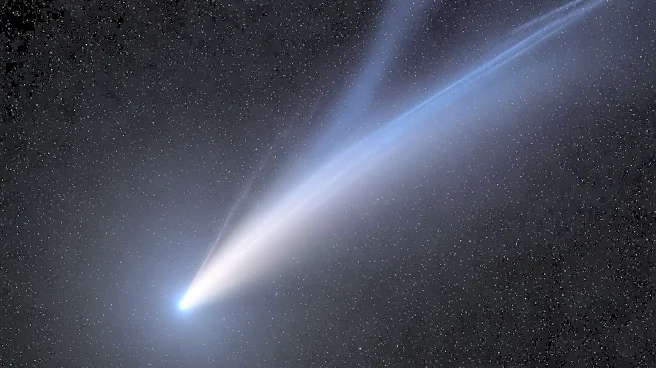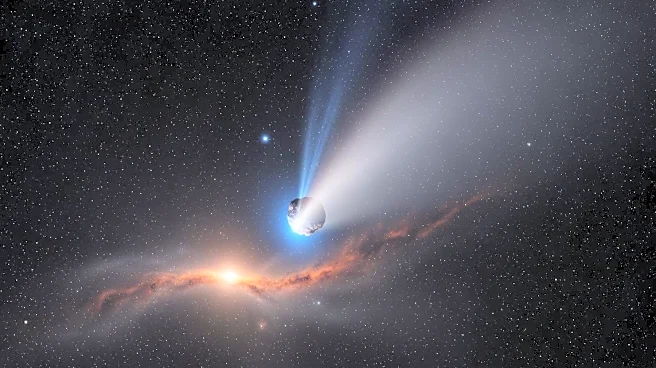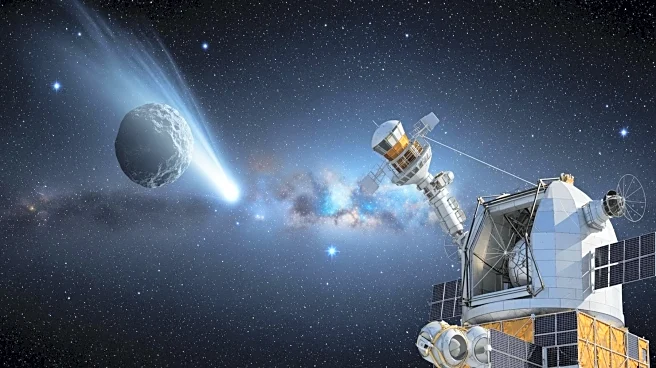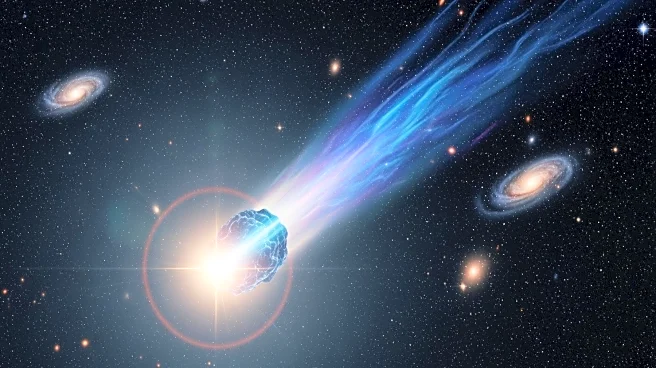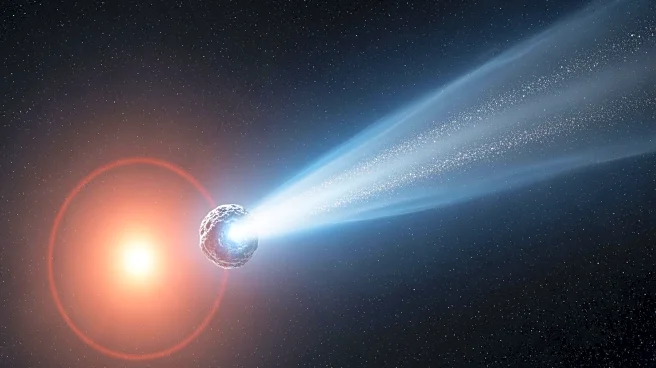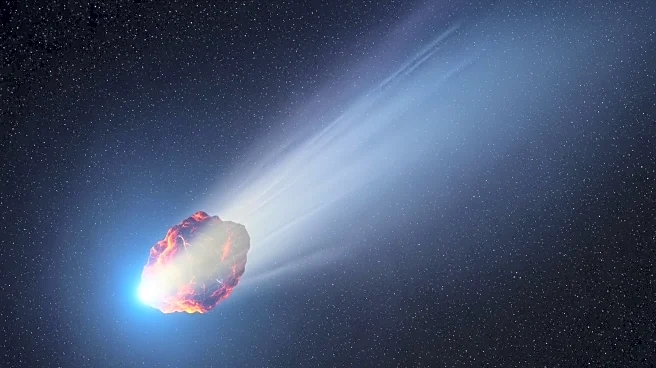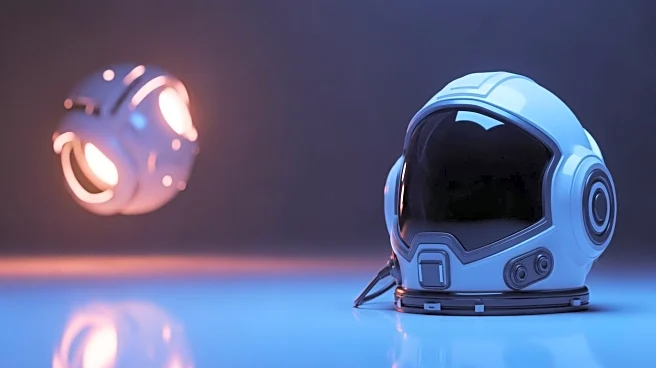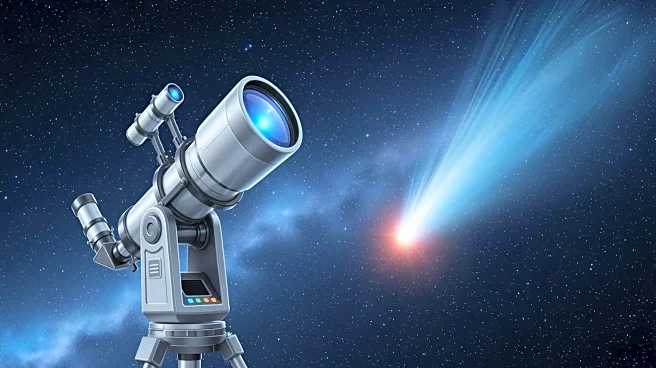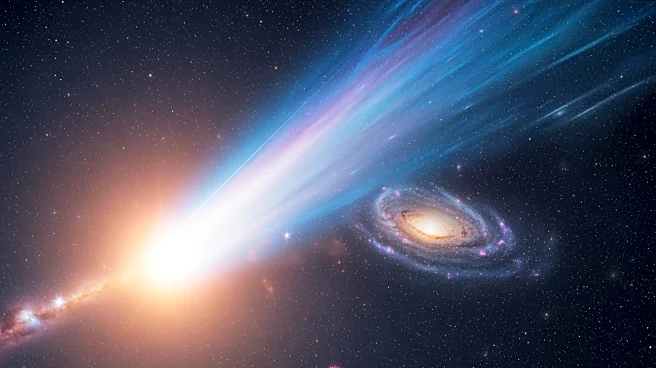What's Happening?
The interstellar comet 3I/Atlas, discovered in July 2025, has become a subject of debate among scientists and theorists. As the third interstellar object confirmed to pass through the solar system, it
has sparked interest due to its unusual chemical patterns observed as it nears the Sun. While NASA experts assert that 3I/Atlas is a natural comet, some, like Harvard astronomer Avi Loeb, speculate it could be an artificial alien object. Loeb suggests the comet might be a spacecraft or a mothership releasing mini-probes, although NASA dismisses these claims due to lack of evidence.
Why It's Important?
The discourse surrounding 3I/Atlas highlights the intersection of scientific inquiry and speculative theories in the study of interstellar objects. This debate underscores the importance of evidence-based science in understanding celestial phenomena. For the scientific community, the comet offers a chance to study interstellar objects' chemical compositions and behaviors, potentially expanding knowledge about the universe. The public interest in such theories also reflects a broader curiosity about extraterrestrial life and the mysteries of space.
What's Next?
As 3I/Atlas continues its journey through the solar system, it will reach its closest point to Earth on December 19, 2025. Scientists will continue to observe the comet to gather more data and verify its natural origins. The ongoing debate may prompt further research into interstellar objects and their potential implications for understanding the universe. Public interest in the comet may also lead to increased engagement with space science and exploration.
